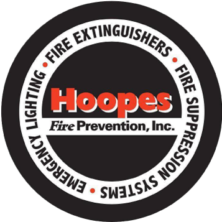NFPA 10 Standard for Portable Fire Extinguishers
Chapter 7 Inspection, Maintenance, and Recharging
7.1.2 Personnel.
7.1.2.1* Persons performing maintenance and recharging of extinguishers shall be certified.
7.2 Inspection.
7.2.1 Inspection Frequency.
7.2.1.1* Fire extinguishers shall be manually inspected when initially place in service.
7.2.2 Inspection Procedures. Periodic inspection or electronic monitoring of fire extinguishers shall include a check of at least the following items:
Location in designated place
No obstruction to access or visibility
Pressure gauge reading or indicator in the operable range or position
Fullness determined by weighing or hefting
Condition of tires, wheels, carriage, hose, and nozzle for wheeled extinguishers
Indicator for non-rechargeable extinguishers using push-to-test pressure indicators
7.3.2 Annual External Examination of All Extinguishers
7.3.2.1 Physical Condition. An annual external visual examination of all fire extinguishers shall be made to detect obvious physical damage, corrosion, or nozzle blockage to verify that the operating instructions are present, legible, and facing forward, and that the HMS information is present and legible, and to determine if a 6-year interval examination or hydrostatic test is due.
7.3.2.2* Seals or Tamper Indicators. At the time of the maintenance, the tamper seal of a rechargeable fire extinguisher shall be removed by operating the pull pin or locking device.
7.3.2.2.1 After the applicable maintenance procedures are completed, a new listed tamper seal shall be indicated.
7.3.2.5 Corrective Action. When an external examination of any fire extinguisher reveals a deficiency, immediate corrective action shall be taken.
Table 7.3.3.1 Maintenance Involving Internal Examination
7.3.6 Six-Year Examination of Certain Types of Extinguishers. Every 6 years, stored-pressure fire extinguishers that require a 12-year hydrostatic test shall be emptied and subjected to the applicable internal and external examination procedures as detailed in the manufacturer’s service manual and this standard.
7.3.6.3 Non-rechargeable fire extinguishers shall not be required to have a 6-year internal examination and shall not be hydrostatically tested but shall be removed from service at a maximum interval of 12 years from the date of manufacture.
Chapter 8 Hydrostatic Testing
8.1.2.1 Hydrostatic testing shall be performed by persons who are trained in pressure testing procedures and safeguards complying with 7.1.2 and who have testing equipment, facilities, and an appropriate manufacturer’s service manual(s) available.
8.1.2.1.1 Personnel performing hydrostatic testing shall be certified by an organization with a certification program acceptable to the authority having jurisdiction.
8.1.2.1.2 Hydrostatic testing facilities with a DOT certification [requalification identification number (RIN)] or a TC certification shall be permitted to perform the task of hydrostatic testing without having additional certification as a fire extinguisher technician as outlined in 7.1.2.
8.1.3 A hydrostatic test shall always include both an internal and an external visual examination of the cylinder









 Many extinguishers available today can be used on different types of fires and will be labeled with more than one designator, e.g. A-B, B-C, or A-B-C. Make sure that if you have a multi-purpose extinguisher it is properly labeled.
Many extinguishers available today can be used on different types of fires and will be labeled with more than one designator, e.g. A-B, B-C, or A-B-C. Make sure that if you have a multi-purpose extinguisher it is properly labeled. This is the old style of labeling indicating suitability for use on Class A, B, and C fires.
This is the old style of labeling indicating suitability for use on Class A, B, and C fires. This is the new style of labeling that shows this extinguisher may be used on Ordinary Combustibles, Flammable Liquids, or Electrical Equipment fires. This is the new labeling style with a diagonal red line drawn through the picture to indicate what type of fire this extinguisher is NOT suitable for. In this example, the fire extinguisher could be used on Ordinary Combustibles and Flammable Liquids fires, but not for Electrical Equipment fires.
This is the new style of labeling that shows this extinguisher may be used on Ordinary Combustibles, Flammable Liquids, or Electrical Equipment fires. This is the new labeling style with a diagonal red line drawn through the picture to indicate what type of fire this extinguisher is NOT suitable for. In this example, the fire extinguisher could be used on Ordinary Combustibles and Flammable Liquids fires, but not for Electrical Equipment fires.